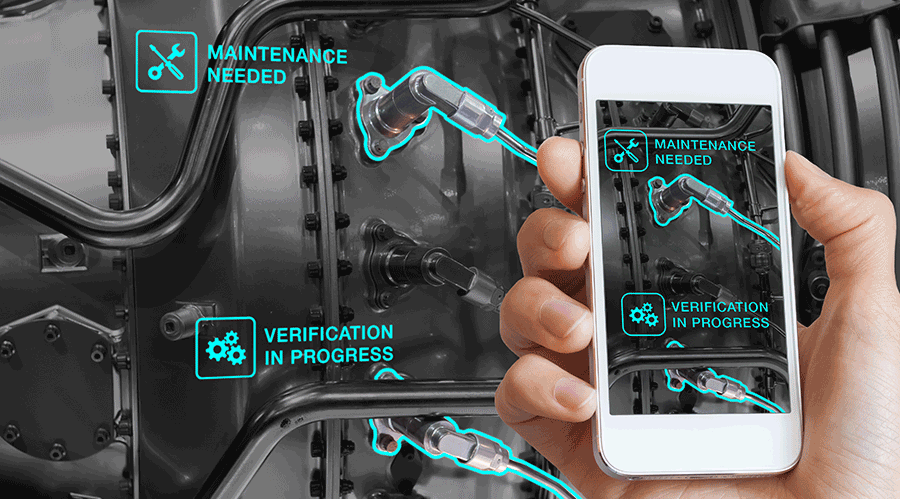Vacuums: Evolution of a Workhorse
Changing demands in facilities lead to a new generation of vacuum cleaners
Carpeting has become the flooring of choice in many areas of facilities. Its durability and aesthetically appeal make it well suited for installation in institutional and commercial buildings.
In response to this evolution, vacuum-cleaner manufacturers have been proactive in developing products that can meet the increasing demands for cleaning larger areas of carpeted floors, as well as many other surfaces in facilities.
As the amount of carpeted surfaces increase in buildings, so does the need to clean them effectively and efficiently. Manufacturers of vacuum cleaners have addressed this need in a variety of ways.
The Big Picture
Today’s vacuum cleaners are more powerful and can clean wider areas in one pass. Some models have two motors, and some have additional power heads that can be attached to portable models to increase its dirt- removing capability. Some vacuums are more than 30 inches wide, enabling operators to clean large areas faster.
For instance, using a 32-inch wide vacuum, the operator can clean the hallway in only three passes. An operator using a 16-inch upright vacuum can clean 1,000 square feet in 14.2 minutes, while an operator with a 32-inch vacuum cleaner can clean the same area in four minutes — a savings of 10 minutes per 1,000 square feet.
Delivering Versatility
Today’s vacuums might be either a walk-behind or a combination walk-behind and portable. Many walk-behind models now offer a selection of tools and implements so an operator can clean high and low surfaces, crevices and stairwells more easily. Some come equipped with standard bags — cloth, paper or some combination — and many feature dust-collection systems that use dust cups rather than bags. Standard portable units also can perform many functions with a variety of attachments.
Technology Advances
The latest vacuum cleaners and other floor-care equipment feature greater integrated technologies, including robotic technology and guidance systems. Both large and small vacuums can operate effectively and efficiently with little attention. Some vacuums have indicators that signal if the vacuum bag is full and if the vacuum is functioning properly.
Clearing the Air
As IAQ issues have gained greater public attention, more organizations have made vacuum cleaners part of their overall IAQ program. Standard tests have been developed to indicate the effectiveness of vacuum cleaners and their filtration systems to ensure that the process of vacuuming, while removing dirt, does not contribute to poor IAQ through inadequate filtration.
High-efficiency particulate air (HEPA) filters have been developed to minimize the distribution of airborne particulates. The Carpet and Rug Institute (CRI) has clear guidelines and tests vacuums to determine their ability to remove soil and filter air passing through without damaging carpet. CRI — www.carpet-rug.com — also provides a list of Green Seal vacuum cleaners that meet or exceed their standards.
Modern vacuum cleaners enhance overall IAQ by removing dust particulates from a building and trapping them in the filtration system. Timely removal of dirt and dust particles greatly contributes to the effective operation of air-handling equipment, as dust and dirt are kept out of air ducts.
Productivity Tools
Increasingly, vacuum cleaners are enhancing productivity. Workers can wear powerful backpack vacuums on a belt around the waist or on the shoulders as a regular backpack. The units come with hoses and wands, and one manufacturer provides an attachment holster.
An operator using a backpack vacuum can more easily clean low areas, high areas and crevices, as well as under and behind furniture. The only real limitation is the length of the power cord, and at least one manufacturer is addressing that issue by providing rechargeable battery packs. Thus, cleaning personnel no longer are tied to wall outlets and can move around areas that have limited power outlets.
The Specification Process
Vacuum cleaners have become critical tools in the war against dirt. But as with any other tool, it is important for housekeeping managers to match the type of vacuum to the tasks at hand. Consider these tips to make prudent choices in selecting the most appropriate vacuum:
- Involve workers who will use the vacuum cleaners in the testing and selection process. This step is critical in ensuring buy-in by users once the vacuum cleaners arrive on the job site.
- Test a variety of vacuum cleaners on different surfaces. Too often, managers assume that workers will only use a vacuum on carpet, but with the right attachments, workers increasingly use them for cleaning hard floors, such as vinyl tile and terrazzo. Find out which vacuums perform best on the greatest number of surfaces.
- Size equipment to the job at hand. A wide-area vacuum will work great in hallways, but it will be next to useless in congested offices. Managers also should consider flexibility in applications such as high and low cleaning.
- Become familiar with terminology used to measure the effectiveness of vacuum cleaners, including airflow, amperage, filtration efficiencies, water lift and voltage. Many commercial Web sites clearly explain such terminology.
- Pay attention to vacuum cleaners that have earned CRI’s Green Seal approval. There are literally hundreds of vacuums listed at the CRI Web site with links and phone contacts. IAQ is becoming of increasing concern to managers and occupants, and Green Seal-approved vacuums will have a CRI label on the packaging.
- Buy vacuums cleaners that have been on the market for a couple of years, rather than the newest and allegedly greatest models. Machines that have been on the market a while should have most of the bugs worked out of them and parts will be more readily available through the supply chain. Also, make sure a reputable repair facility is nearby. It is much easier to take the vacuum to a local repair facility that to ship it halfway across the continent for repairs.
Once the decision on a vacuum cleaner is made, stick with it. Do not shop and change every couple of years. Departments with a large inventory of vacuums, shopping and changing also need to maintain a large or varied inventory of parts, including belts and bags. Multiple models and brands also might mean having to use multiple repair facilities, unless a skilled repair facility nearby can handle multiple brands.
From air vents and floor crevices to carpeted and hard floors, the vacuum is becoming an indispensable tool for many in the cleaning profession. With the addition of quality filtration systems, robotics and battery-powered equipment, vacuums are becoming even more versatile and essential for housekeeping managers striving to clean their facilities effectively and productively.
Related Topics:











